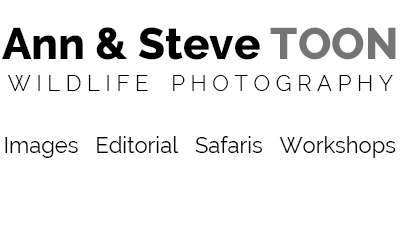Every now and then you find a special place to stay you want to tell everyone else about, yet keep to yourself at the same time. The following five are some of our favourite secret spots – those ‘we could tell you, but then we’d have to kill you’ remote hideaways that have got getting-away-from-it-all just right…
Noup Divers Huts
Rough Diamond on South Africa’s Namaqua Coast

Noup divers hut, metres from the surf
A cluster of rustic, stone self-catering cottages rise up from a wind-scoured coastal plain like a mission station on Mars. This is the middle of nowhere on South Africa’s remote west Namaqualand coast. It’s a miniature version of Namibia’s Skeleton Coast further north, complete with fog, seal colonies, bleached whale bones, alien-looking desert-adapted vegetation and the rusting hulks of old shipwrecks. You feel like a latter-day Robinson Crusoe holed up in Fred Flintstone’s pad as you chug a cold beer at sunset on your pebbly stoep (verandah). The hotch-potch handful of rugged buildings, cheerfully decorated with driftwood nicknacks, were custom-built by the intrepid divers who came in search of their fortune: the diamonds on the seabed from the surf down to about 30 metres beyond De Beers’ heavily guarded mining operations just along the coast, so there’s history here too…
Mundulea
Go Walkabout with ‘Indiana Bones’

Master of all he surveys: Bruno Nebe at Mundulea
The small bush camp on legendary Namibian bush guide Bruno Nebe’s pride-and-joy private reserve in the Otavi Mountains, not far from Etosha National Park, is so well hidden you don’t really see it until after you’ve arrived. Here the dense bush thickets embrace a secret enclave. Inside, quirky hand-crafted furniture and fittings have been welded by Bruno from rusting farm machinery and salvage yards finds. There’s a field kitchen with blackened pots producing home-made bread, full-on bush breakfasts and Bruno’s best game recipes, alongside a small library of reference guides and a mini-natural history museum of rocks, fossils and old bones. Outside, leopards prowl and hyenas cackle while you’re tucked up safely in your cosy tent. Days are spent on a voyage of discovery with Bruno – the man’s a walking encyclopaedia – on the four farms he’s combined to form Mundulea game reserve. Evenings are all about relaxing round the fire or the large communal table.
Mapungubwe’s Leokwe Camp
Rediscover Africa’s Lost City
You might wonder how a national park that’s also a World Heritage Site can really be classed a hideaway, but this Limpopo reserve is off the beaten track and hasn’t really been discovered yet by overseas visitors to South Africa. Loekwe has a great location and the well-appointed, earth-toned chalets blend in beautifully with the baobabs and fascinating rock formations around them. The fun outside showers are not the the sort of thoughtful touch you’d expect from affordable accommodation in a national park and the sculpted infinity pool blends right in among the rocks. We watched soaring black eagles while cooling off when we were there last. The reserve has about 400 bird species to keep a lookout for and game including white rhino, eland, lion and elephant.

Budget chic among the baobabs
But it’s the lost kingdom on top of Mapungubwe Hill that’s the most amazing find here. The archaeological remains of a sophisticated African civilisation living in great wealth above the plains and trading with China, India and Egypt are well worth the short climb to the top. Shamefully Mapungubwe’s secrets were kept hidden from the world during the apartheid era and the story was only made public after the first democratically-elected government came into power.
Papkuilsfontein Guest Farm
A Romantic Flower Route Stopover

Flower power: old farm workers cottage at Papkuilsfontein
Nieuwoudtville in South Africa might well be a sleepy little dorp (small town) for most of the year, but in the spring flower season the place blossoms quite literally with carpets of eye-popping colour and enough endemic flower species to keep experts, nature photographers and floral enthusiasts returning year after year. Nearby Papkuilsfontein Guest Farm, one of our favourite flower route stopovers, is great to visit any time, even after the flower show has died down. Historic buildings there have been carefully restored, or rebuilt, to create pretty, period-piece self-catering cottages, complete with oil lamps among established poplar groves and old pear trees. But who wants to cook when you can order a home-cooked, three-course meal delivered with the best cutlery and candles from the farm kitchen a few kilometres away to your own private table. On our most recent visit we celebrated our wedding anniversary on our way back down to Cape Town from the Kalahari with melting lamb shanks in red wine.
Fossil Ridge Ecolodge
Glamping in Gamkaberg Nature Reserve
Give a medal to the person who found the location for this gem of a glamping spot in Gamkaberg, near Calitzdorp: one of Cape Nature’s impressive portfolio of peaceful nature reserves in the Western Cape. Tucked under a sandstone ridge, the so-called ‘ecolodge’, is an exclusive site for just four people, but if just two of you pitch up then you’ve got sole use of the well-designed lapa and lounge, the neat little sundeck and the cute and refreshing splash pool. You sleep in two safari-style tents, equipped with comfy armchairs and a private deck area for each couple. There’s a neat little wash house and bathroom with all mod-cons so you don’t have to rough it. The reserve, famous for helping save the Cape mountain zebra from extinction, is the ideal place to reconnect with nature and with so many birds flitting in and out of the Fossil Ridge Ecolodge environs you don’t need to leave the comforts of camp to do it.

Glad to be glamping: Fossil Ridge Ecolodge

